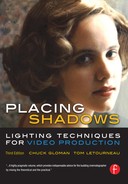Chuck Gloman
Growing up watching nightly old 1920’s comedies with his father, Chuck Gloman was bitten by the film bug at an early age. Instead of critiquing films, he though it would be more fun to create them.
Enrolled in the film program in Pennsylvania State University, he created numerous student films that were later marketed on video. His Masters Thesis Film, a 1920’s-style comedy short entitled “The Butler Did It,” was sold to Home Box Office and Cinemax, where it enjoyed a nine-year run. After receiving a Bachelors Degree, he stayed on and was the first student in Penn State’s history to complete a Masters Degree in Film/Theatre. While working toward his Masters, he taught intermediate and advanced film production. Upon graduation he joined the video world and created interactive videos for a community college. From there he worked with the US Armed Forces, Federal Express, and IBM and produced and directed over 50 interactive videodiscs. With the corporate training world beckoning, he shot and lit over 200 informational, corporate, and training tapes.
In the mid-1990’s he created his own independent production company, No Splash Productions, and shot corporate training films and videos as well as television commercials. From there he worked at a local NBC affiliate and directed and lit over 600 television commercials.
Currently, he is an independent producer and director of photography, writes for several magazines and is looking forward to developing his own lighting instrument, the “Glo-light.”
As Ted Baxter Was fond of saying, “It all began at a 5000-watt radio station in Fresno, California.”
For Tom LeTourneau it began at a 1000-watt radio station in northern Wisconsin. And what does a radio announcer know about lighting? For one thing, he knows that when pranksters turn the lights out in the studio while you are reading a live newscast, you had better be prepared to tap dance or come up with some creative lighting.
His solution to that all-too-frequent lighting problem was to hold the copy against the glass faceplate of the VU meter so that the VU’s small lamps acted as a backlight to the paper—and keep on reading. It took the puzzled pranksters several weeks to figure out how someone could read UPI wire copy in the dark. When they learned his secret they also learned a valuable lesson. No aspect of lighting is too small to be ignored, a fact LeTourneau has been espousing ever since. (They also learned how to remove the small lamps from a VU meter and to laugh at the sound of tap dancing.)
From those early days of solving lighting problems in radio and learning to read ahead of flaming scripts, LeTourneau moved on to television as an audio man, director, producer and lighting designer. After more than 25 years in the business, he has opened his own production company and provides a full range of production services for his commercial and industrial clients in Chicago. He also conducts lighting and directing seminars around the country.
